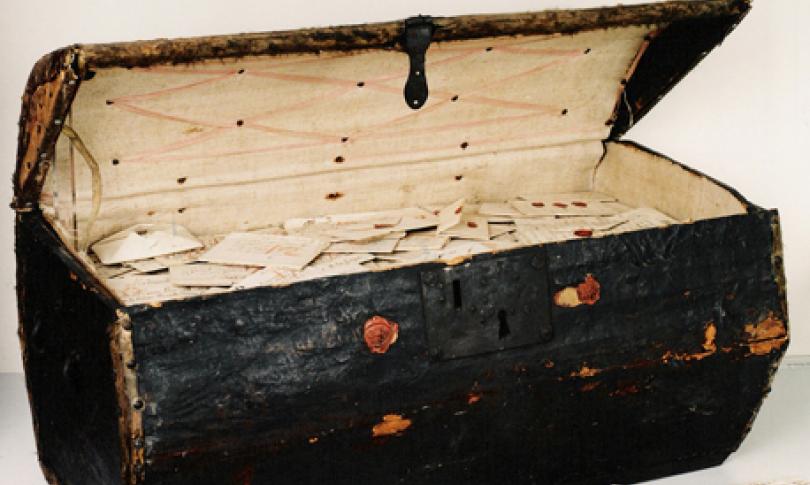
Amman, Jordan - Many decades ago, people connected with one another through hand written letters, sharing secrets, news, and emotions. Before the innovation of modern envelopes in the 1830s, a unique method called “letterlocking” was used to secure these precious messages. “Letterlocking was a day-to-day activity for centuries, across cultures, borders, and social classes,” explains in a recent study by Dambrogio et al 2021, revealing how this technique played a vital role in keeping communications safe.
Experts at the heart of Synchrotron-light for Experimental Science and Applications in the Middle East, SESAME in a collaborative research, have delved into these treasures analyzing one such collection known as the Brienne Collection, which was more than 3,000 documents. “A European postmaster’s trunk preserving a 300-year-old undelivered post provides a rare opportunity to study sealed locked letters,” the researchers note. Among the unopened letters lie secrets waiting to be uncovered.
This exploratory tomographic study aimed at developing innovative methods for reading these precious artifacts without causing damage.
Envisioning a letter tightly sealed, folded in an intricate way to ensure that only the intended recipient could read its contents. With the use of wax seals and careful folding, these letters became their own envelopes, creating a sense of safety in a world where privacy has always been prioritized. The study highlights that “the material evidence on surviving opened letters, such as crease marks and wax seals,” tells the story of thousands of folding techniques used throughout history.
"This project represents a perfect example of how SESAME's facilities can be used for interdisciplinary research. We are excited about the possibilities this opens up for museums and collections in the region, to investigate their artifacts in ways that have not been previously possible, explains Dr. David Mills, member of the research team.
One of the major results was to first disclose the contents of DB-1627, a letter typical of day-to-day communications of the time. It contains a request from Jacques Sennacques, dated July 31, 1697, to his cousin Pierre Le Pers, a French merchant in The Hague, for a certified copy of a death notice of one Daniel Le Pers, it says.
"This is a breakthrough not only for the scientific community but also for the preservation of cultural heritage," Dr. Nadine Akkerman, one of the leading researchers involved in this study. "Our work at SESAME bridges the gap between science and the humanities, opening up new avenues toward exploring and understanding the rich history of the region."
Applying new technology, the team developed a process called "virtual unfolding" that allows them to scan locked letters without opening them. This exciting technique, in this way, uses high-resolution scans to show how it works out-the inner mechanics of the fold and lock-and can be read without compromising the integrity of the letter physically. "This approach grounded in computational analysis allows scientists to read their contents and identify their letterlocking mechanisms," the study explains.
"Many of the documents were written with carbon ink, so it is mostly difficult or impossible to distinguish the ink from the papyrus itself," says Verena Lepper, Ägyptisches Museum, Germany. She says that calls for a review of other methods; after all, some of the ancient scrolls have metallic admixtures in their inks that could provide such contrast.
The researchers went on to discover these histories, they underline how letterlocking acts to unfold tamper-evident features in the protection of messages. "We observe built-in tamper-evident locking mechanisms that would prevent potential interceptors," further underlining the sophistication these early security measures have.
This fascinating blend of art, science, and history did not only shed light on the way ancestors communicated but presents the opportunity to reflect on the importance of privacy in human lives. “The findings present new avenues in understanding how our ancestors communicated,” they conclude, reminding us that every letter is a window into a world long gone—one filled with emotion, intrigue, and the timeless need to connect.
So, the next time you send a letter, think about the generations that came before and the remarkable techniques they used to ensure that their words remained private, secure, and treasured.
